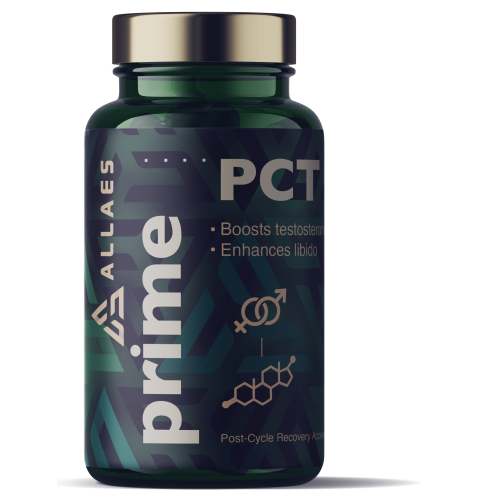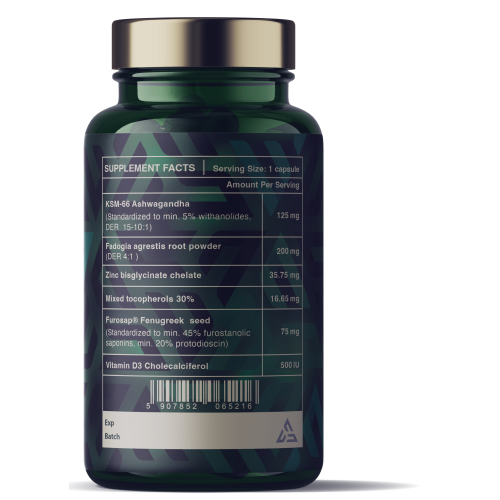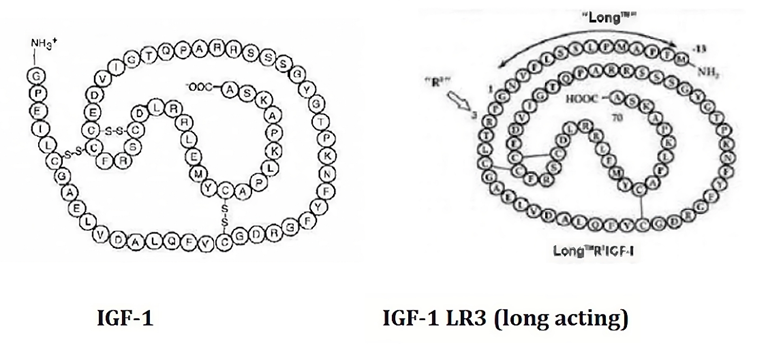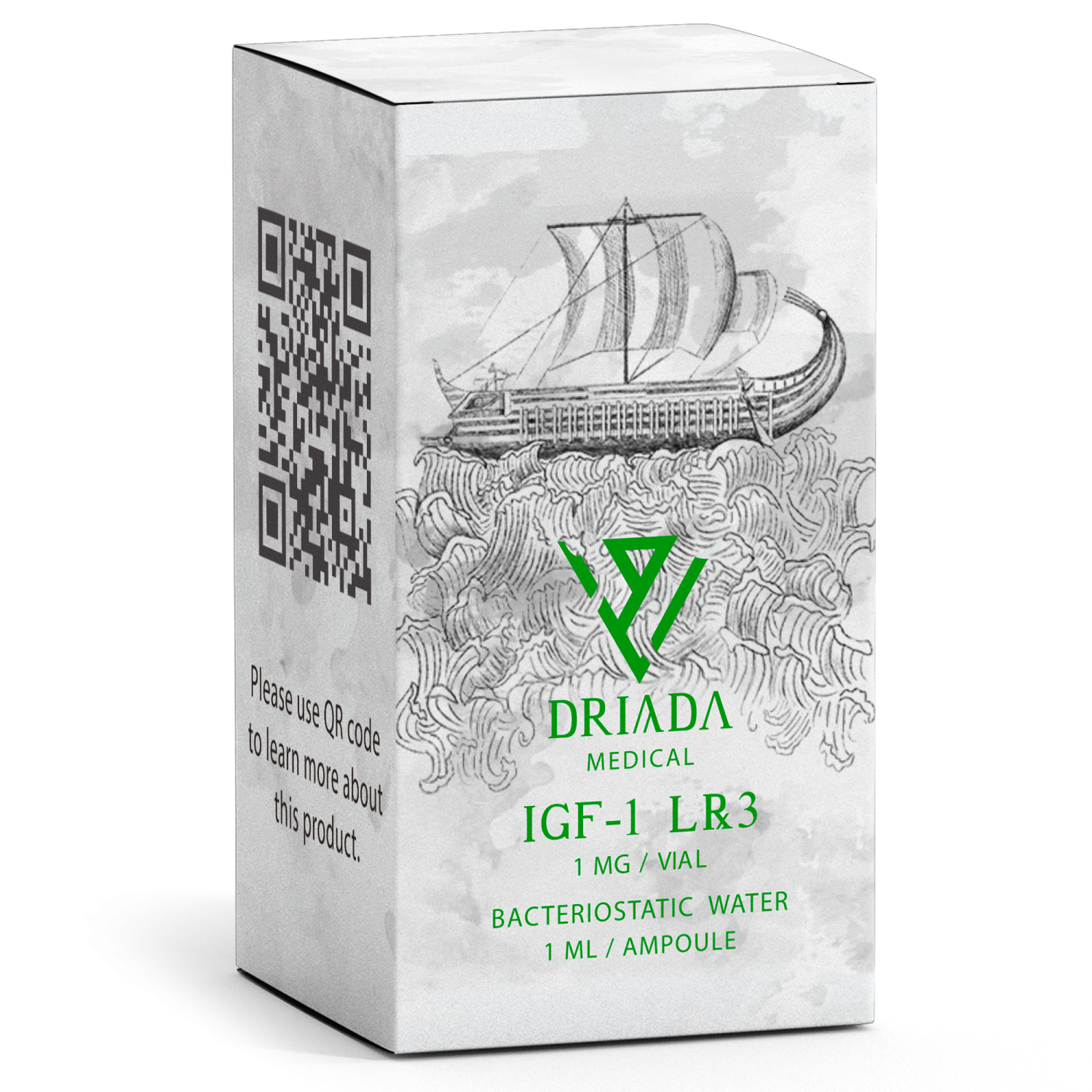
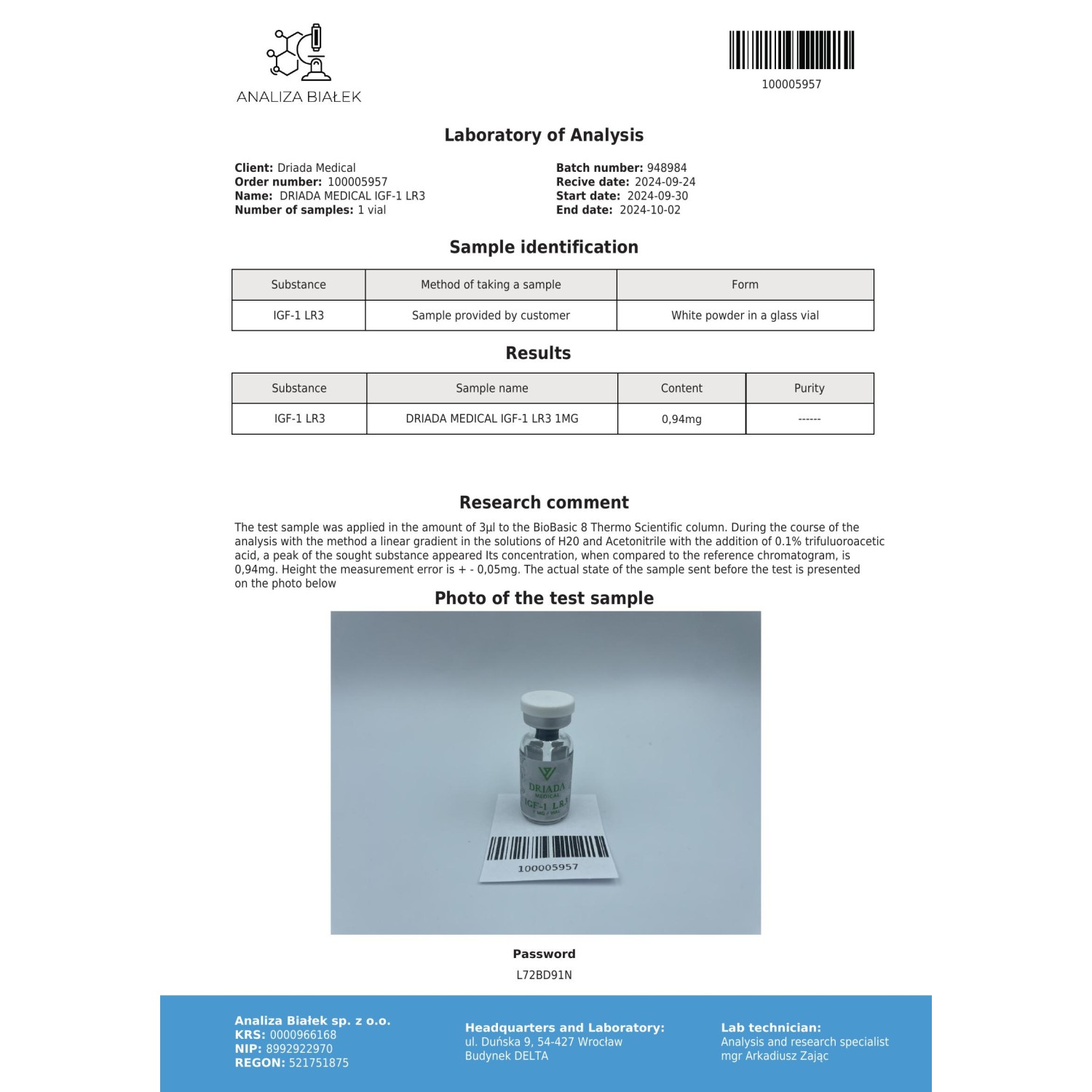


- Stock: In Stock
- Package: 1mg/vial+water
Recommended with this product
IGF-1 can reduce the activity of the enzyme that
View moreBoost your own testosterone production or recover
View more- Composition: IGF-1 LR3 1 mg.
- Category: peptide.
- Purpose: muscle growth, recovery, anti-aging.
- Form: vial with 10 mg of lyophilized powder + 1 ml ampoule of bacteriostatic water for reconstitution.
- Administration: subcutaneous injections.
What is IGF-1 LR3?
IGF-1 LR3 is an enhanced form of insulin-like growth factor, designed for longer activity and stronger anabolic effects. Unlike natural IGF-1, which stays active in the body for only a few minutes, IGF-1 LR3 remains active for up to 30 hours and stimulates tissue growth and regeneration much more effectively.
This peptide is commonly used by athletes and individuals aiming for faster recovery, anti-aging support, or muscle mass development. Its wide range of effects includes support for fat loss, muscle growth, joint and ligament recovery, and even nervous system regeneration. This makes this medicine a really versatile tool that can complement nearly any goal, from building mass to pre-contest preparation.
Main effects of IGF-1 LR3
💪 Accelerated muscle growth — stimulates both hypertrophy (increase in fiber size) and hyperplasia (increase in fiber number).
🛌 Faster recovery — shortens recovery time after training by enhancing cellular regeneration.
📉 Fat reduction — increases metabolic rate and promotes a leaner physique.
👶 Anti-aging effect — supports skin, joint, and cognitive health.
🏃♂️ Increased endurance and energy — improves glucose uptake and cellular efficiency.
Thanks to these properties, IGF-1 LR3 is widely used not only by athletes but also in regenerative and anti-aging protocols.

How to take IGF-1 LR3?
Medicine comes in a vial containing 1 mg of lyophilized powder. It must be reconstituted using the provided bacteriostatic water before use. You can read detailed instructions on how to prepare peptides and perform injections HERE.
Dosage
- Typical daily dosage ranges from 20 to 100 mcg.
- Beginners should start with 20–40 mcg to assess tolerance.
- Experienced users may increase the dose to 80–100 mcg if needed.
Administration schedule
- Inject once daily, preferably post-workout or in the morning on an empty stomach.
- A typical course lasts 2 to 6 weeks.
- Rest periods between cycles should be at least 4 weeks.
Precautions
- Do not exceed the recommended dose. Excess IGF-1 can reduce insulin sensitivity and may cause side effects. Itʼs advised to periodically monitor blood sugar levels, especially during prolonged or high-dose use.
- Avoid continuous use; this compound is best used in cycles.
- Be sure to keep things clean when mixing and injecting — it helps avoid contamination.
- Not recommended for individuals with diabetes, cancer, or during pregnancy.
Possible side effects
- Hypoglycemia (low blood sugar). One common sign of low blood sugar is feeling shaky or dizzy. You might also notice sweating, sudden hunger, irritability, or just feeling weak and off.
- Redness or irritation at the injection site.
- Headache.
- Possible development of insulin resistance with prolonged use.
If side effects occur, reduce the dose or temporarily stop usage.
How to store?
- Keep the product refrigerated at 2–8 °C (36–46 °F).
- Do not freeze.
- Protect from light.
- Avoid frequent temperature changes (e.g., repeated removal from the fridge).
- Once reconstituted, keep refrigerated and use within approximately one month.
How does IGF-1 LR3 work?
This peptide helps the body grow and recover by sending powerful signals to cells involved in repair and metabolism. Because of the way itʼs built, it stays in the bloodstream longer and works more effectively.
- Activation of IGF-1 receptors: once IGF-1 LR3 binds to its receptors on cells, it sets off a chain reaction that encourages growth and regeneration in tissues like muscle and bone.
- mTOR activation and protein synthesis: one of the substance key effects is helping muscles build more protein by triggering a growth-related signal (mTOR) in the body. This leads to noticeable gains in muscle size over time.
- Muscle fiber hyperplasia: This peptide is unique in its ability to promote the creation of new muscle fibers, not just enlarge existing ones. Most muscle growth comes from enlarging existing fibers — but hyperplasia actually creates new ones. Itʼs uncommon, but highly beneficial for serious athletes.
- Reduction of catabolism: it helps prevent muscle breakdown, preserving mass even during high physical stress or caloric deficits.
- Regulation of glucose: IGF-1 LR3 increases the sensitivity of insulin receptors and enhances the transport of glucose into muscle and other tissues. This mechanism helps the body manage blood sugar more efficiently and ensures a steady supply of fuel for cellular activity and repair.
- Regeneration and rejuvenation: IGF-1 LR3 speeds up how the body repairs itself by activating stem cells and improving blood flow to damaged tissues. This not only helps injuries heal faster, but also supports smoother skin, better joint function, and other signs of healthy aging.
With its ability to influence multiple pathways at once, this peptide plays a key role in sports pharmacology and regenerative therapies.
Are IGF-1 and IGF-1 LR3 the same thing?
Insulin-like Growth Factor 1 is a naturally occurring protein in the human body that plays a key role in growth, development, and cell differentiation. It consists of 70 amino acids and works by binding to IGF-1 receptors, influencing a variety of physiological processes.
IGF-1 LR3 is based on the natural IGF-1 molecule but slightly reworked to make it more stable and longer-lasting. One key change is the addition of 13 amino acids, plus a small swap in the chain (glutamic acid is replaced with arginine). These tweaks help the compound stay active in the bloodstream much longer, since it doesnʼt bind as easily to the proteins that normally shut IGF-1 down. This is one of the reasons why the LR3 version of IGF 1 price may be different — youʼre getting a longer-acting and more focused version.
Although both compounds act via the same receptors, they differ in several important ways:
- Structure: LR3 version has a modified amino acid sequence, including the substitution at position 3 and an extra 13 amino acids at the N-terminus, which increases resistance to degradation.
- Duration of action: natural IGF-1 circulates in the bloodstream for just 12–15 minutes, while IGF-1 LR3 remains active for up to 20–30 hours.
- Bioavailability: due to reduced binding to IGFBPs, this version of peptide has higher tissue penetration and more pronounced biological effects.
- Effects: IGF-1 LR3 provides stronger stimulation of muscle growth, hyperplasia, and tissue recovery, while natural IGF-1 is milder and shorter-acting.
FAQ
What are the benefits of IGF-1 LR3?
Faster muscle growth, better recovery, fat loss, anti-aging support, and more energy. Many people looking to improve performance or recovery search for IGF-1 LR3 for sale due to its versatility.
Can IGF-1 LR3 be used with steroids?
Yes, itʼs often combined with steroids to improve results.
How is IGF-1 LR3 different from regular IGF-1?
It lasts much longer and works more effectively thanks to structural modifications.
Is IGF-1 LR3 safe to use?
Generally safe when used properly, but monitor blood sugar and avoid overdosing. Those considering IGF-1 LR3 buy online should always verify source quality and product authenticity.
How should I dose IGF-1 LR3 for the best results?
Start with 20–40 mcg daily. Inject once a day for 2–6 weeks, then take a break.





